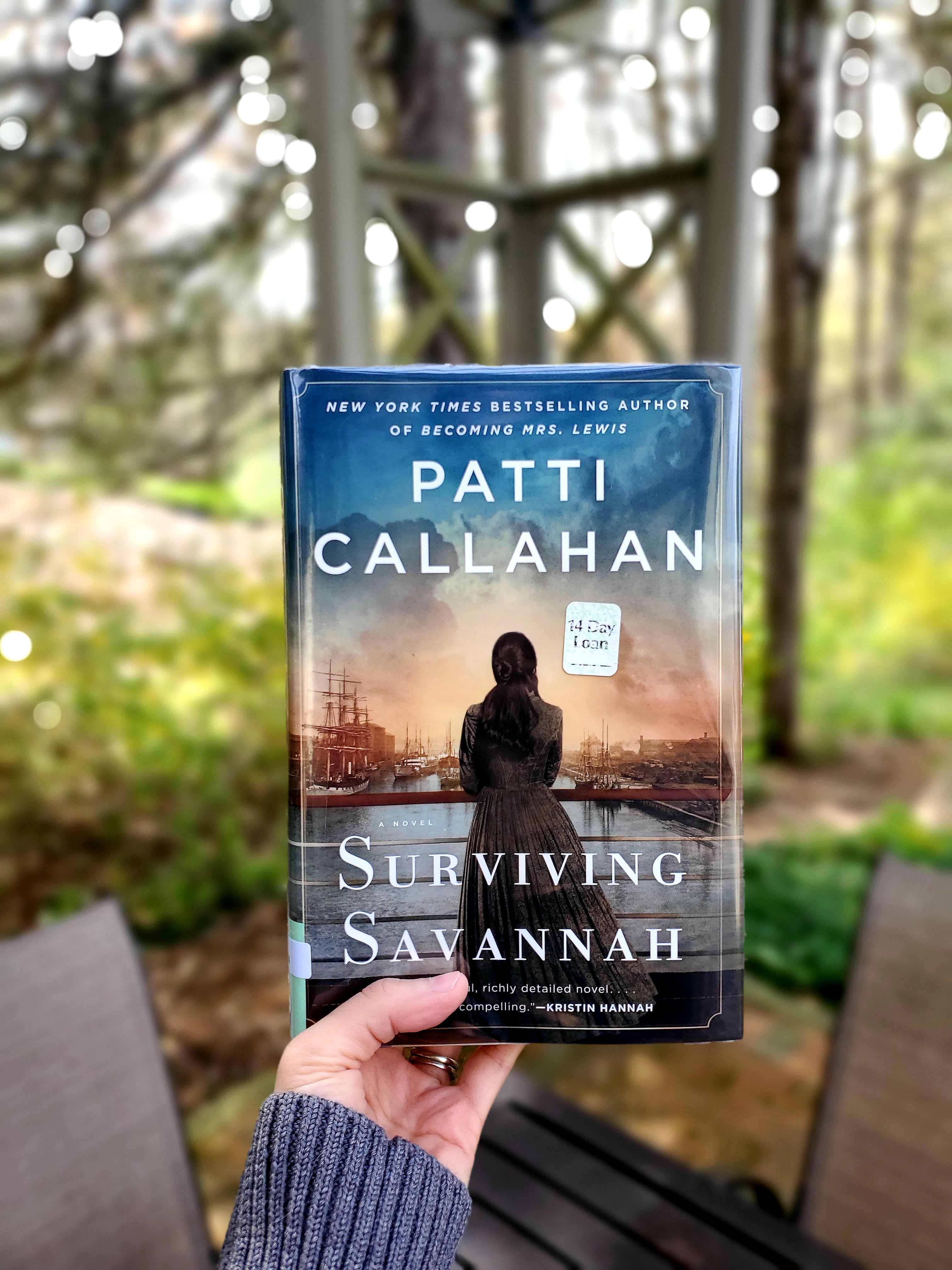It took me a few chapters to get drawn into Surviving Savannah, but once I did, I couldn’t put this book down. Settle in, Tartlets, because this book review is going to be a little longer than usual.
This bittersweet, fascinating historical fiction novel left me with two things:
1) a hardened resolve to never, ever, ever take a cruise
2) a need to know more about the real story behind the Pulaski steamship disaster
What’s Surviving Savannah about?
Author Patti Callahan brings to life a catastrophic event in American history that I never knew happened. The Pulaski disaster was never taught in (New Jersey) schools, and before picking up Surviving Savannah, I’d never heard of the ill-fated steamship, which was nicknamed the “Titanic of the South.”
Surviving Savannah consists of two timelines: that of present-day Everly, a historian curating an exhibit of the recently discovered Pulaski shipwreck, and that of Augusta and Lilly, two 1838 women who were aboard the doomed ship and fought to survive at sea after the Pulaski exploded.
Yes, exploded. The ship exploded.
How could I have not known about this before?!?! Holy hell.
What I loved about Surviving Savannah
The amount of historical detail and research packed into Surviving Savannah is astounding. While the steamship disaster takes center stage, Callahan addresses general Savannah history (and admirably handles its complicated past), diving and shipwreck recovery, and the life and times of 1838 Savannah society. Her beautiful, evocative writing brings everything to life. It’s like Callahan found a magical window into the past and yanked it open for you to peer through.
The chapters in Surviving Savannah flip between Augusta, Lilly, and Everly’s points of view. The Everly chapters help move the story along, but the Augusta and Lilly chapters are what truly suck you in…even though they are heavyAF.
I mean….damn, Callahan.
It’s also these intense chapters that make Surviving Savannah such an amazing read.
A shipwreck comes to life
I felt like I was in a shipwreck when I read about Augusta and Lilly. Their traumatic ordeal slams into you like a rogue wave. First comes the shock of being tossed into the dark water as the ship sinks down next to you. Then, there’s the horror of watching loved ones drown while you can do nothing but try to save yourself. You feel in your bones the hopelessness of floating on a tiny, overcrowded piece of wood in the middle of an ocean. And your heart becomes heavy with the dread of going one day, then another, and another without food, drinkable water, or shelter. Callahan even works the indignity of being unable to go to the bathroom in private into the narrative – such a relatable, realistic detail that, while we know must be a concern while shipwrecked, is rarely addressed in fictionalized accounts of historical disasters.
As a result, the Pulaski chapters of Surviving Savannah are visceral. I had nightmares about being shipwrecked while I was reading this novel. That’s the level of detail we’re talking about here. That usually only happen when I read horror novels.
But, I guess that tracks: I can’t think of anything more horrific than what the passengers of the Pulaski went through.
Should you read Surviving Savannah?
Whew! Okay, let’s pull back from that dark note and end on a high one, shall we? Even though this book is a heavy read, it’s a glorious one. Historical fiction fans, make sure you don’t miss Surviving Savannah. Callahan includes a ton of info about her historical research in the “Author’s Note” and “Resources and Facts” sections at the end of the book. I really loved finding out what was “true” in the story and what was made up.
I’m heading to Savannah in the fall for vacation, and after reading this book, I’m planning to visit the Ships of the Sea Maritime Museum to get more firsthand history about the Pulaski. If you’ve read Surviving Savannah and/or if you’ve been to the Maritime Museum, please let me know! I’d love to hear your thoughts.
What’s the book-inspired recipe for Surviving Savannah?
Be sure to check back in for my book-inspired recipe: Best Fried Green Tomato BLTs!































































































































































































































Surviving Savannah was in my top favorite reads for last year, and I’ve gifted a few copies! Having spent a week in Savannah in January of 2020, I loved both timelines since I recognized so many places, (and some people!), from the contemporary timeline. While you’re there, look for the man walking his turtle. He’s mentioned in the book! I felt the same way about needing to know more about the Pulaski once I finished the book. The author actually has a podcast with more history, and I attended an on-line talk she did through the Atlanta History Museum. Fascinating! (And I agree. NO cruises!)
I dimly remember the man walking his turtle in the book. I’ll definitely see if I can find him during my trip! Thanks so much for the info about the podcast. I’ll need to listen to that before I head to Savannah!
Request placed at local library!
Hurray! I think you’ll really love this one.
Late in the day, but I just finished “Surviving Savannah” and while the premise was good, it suffered from a recent trope I’ve noticed in historical fiction
Argh, submitted before I was done.
The trope is “Oh, I’m a GOOD slaveowner!” I’m not saying that they didn’t exist, but as I got into the book, I bet myself that Lilly’s story would end as it did. Patti can do and has done better than this–I absolutely loved “Becoming Mrs. Lewis.”
Hi, Trish! So many stories do employ similar tropes and plotlines these days; it can get very frustrating! I haven’t read Becoming Mrs Lewis, but it’s on my list now. Thanks for the rec!